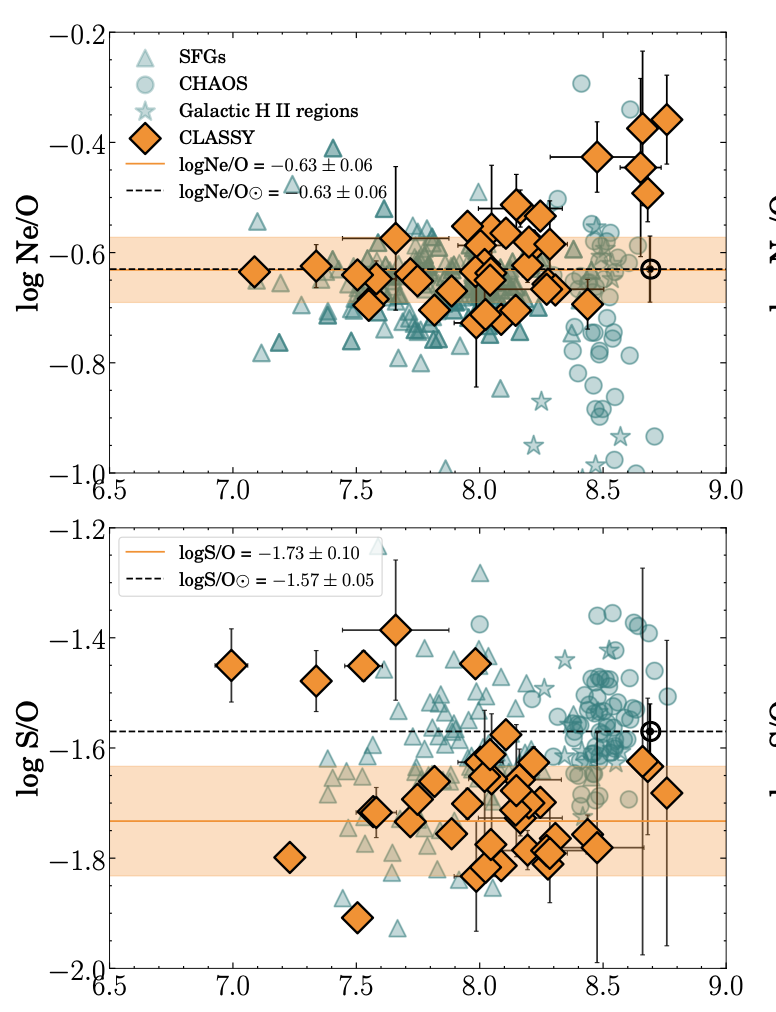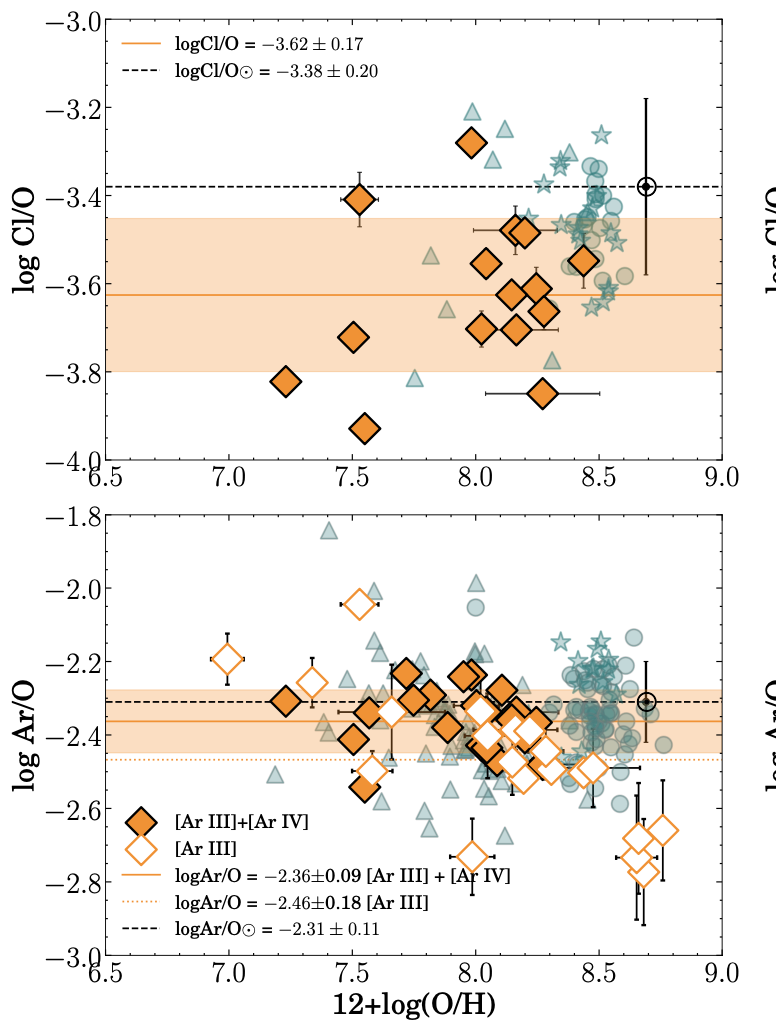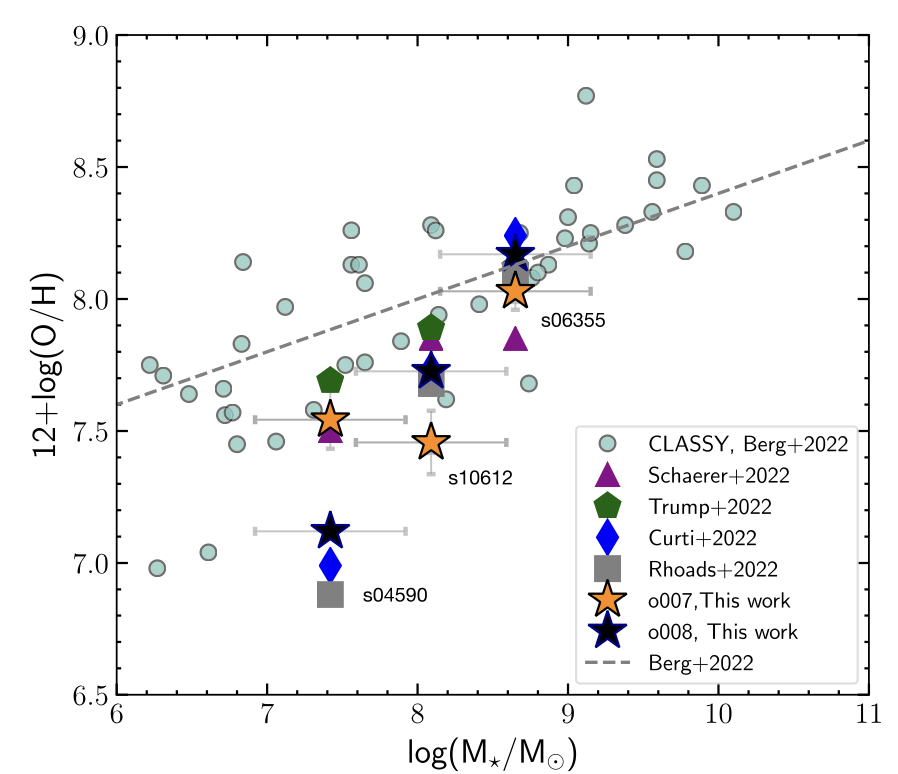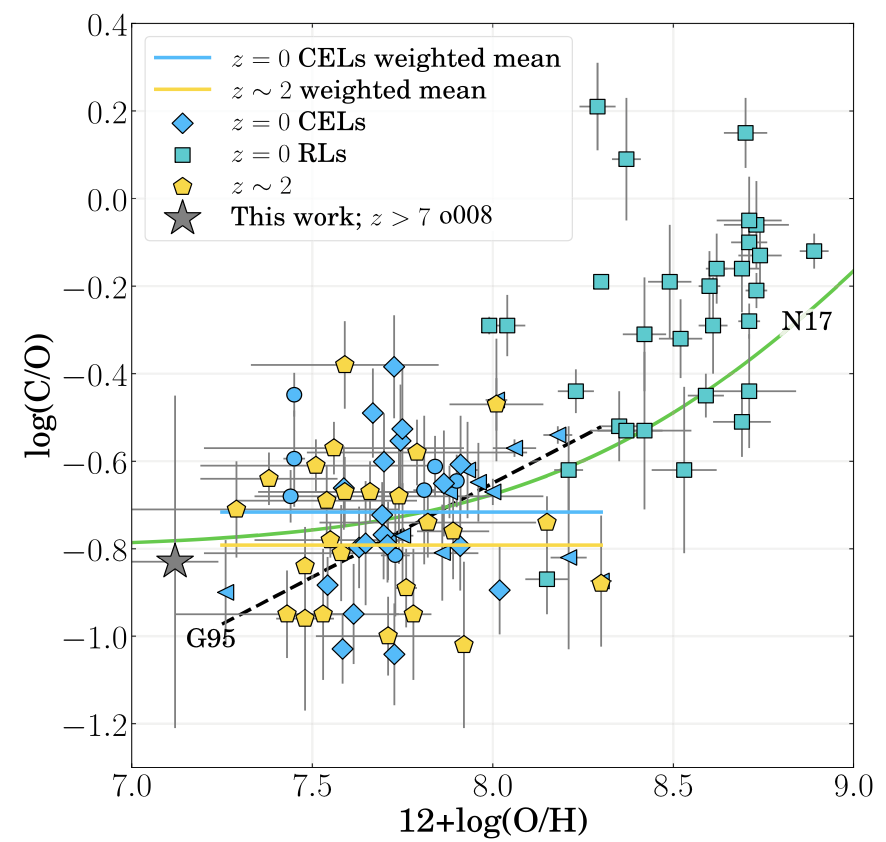Karla Ziboney Arellano-Córdova
I am a postdoctoral fellow at the University of Edinburgh at the Institute of Astronomy.
My research focuses on analyzing the physical conditions and chemical abundances of emission line objects, including H II regions and star-forming galaxies at different redshifts. I use optical and UV data to understand the temperature and ionization structure and the abundance patterns of several elements.
.
CLASSY IX: The Chemical evolution of Ne, S, Cl, and Ar Elements
Arellano-Córdova K. Z., 2024 (Accepted in ApJ)
This paper study the abundance patterns of Ne, S, Cl and Ar for a sample of 43 nearby star-formig galaxies. We investigate the relationships between these elements and metallicity. We found a constant behaviour as expected for metallities below the solar, while that a higher metallicities the abundance patterns of Ar and Ne shows a significant trend with metallicity. In addition, S and Cl show low values of the S/O and Cl/O ratios than the solar abundance, and Ar and Ne provides an excellent agreement with the solar abundance of these elements.
In addition, we investigate the chemical evolution of these abundance patterns at z > 6. We found that no redshift evolution for Ne, while that for S and Ar is inconclusive due to lack of sample of galaxies at z > 6 with robusts chemical abundance determinations. Finally, we present an analysis of the mass-metallicity relation and we introduces the Neon-Mass metallicity relation for CLASSY and high-z galaxies.
A First Look at the Abundance Pattern-O/H, C/O, and Ne/O-in z > 7 Galaxies with JWST/NIRSpec
Arellano-Córdova, K. Z., 2022, ApJ, 940 L23
In this study, we analyzed the post-processing rest-frame near-UV and optical spectra of three z > 7 galaxies using observations taken with NIRSpec on the JWST. We reported the detection of C III] λλ1907,1909 in a z > 8 galaxy, which allows calculating the most distant C/O abundance ratio. We analyzed the C/O and Ne/O ratios as a function of metallicity, finding a similar trend as seen in z ~ 0 galaxies. We investigated the redshift evolution of the mass-metallicity relationship (MZR), we found a similar trend with respect to z ~ 0 galaxies, suggesting a similar physical process driven by outflows such as metal-enriched gas and inflows of pristine gas.




